Strawberry Asia is an Italian variety registered in 2005. Strawberries are intended for cultivation in the northern regions of Italy; they came to Russia a few years later. It is grown only by amateur gardeners; as a rule, seedlings of this variety are not available in nurseries.
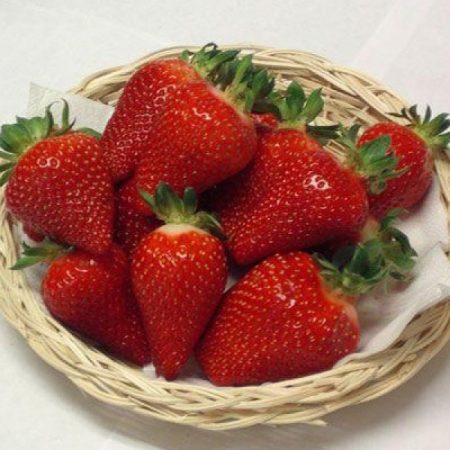
Strawberry Asia
Characteristics of the Asia variety
Asia strawberries are of medium early ripening, the berries ripen in mid-June, non-repairing.The bushes are large with a compact head of foliage. The leaves are large, bright green, wrinkled and shiny. The bushes form many horns. The whisker formation is weak, the whiskers are short and thick.
The first berries are large, weighing 50-70 g, some of them have a ribbed, almost spherical shape. Mass-harvested berries weighing 30-45 g, regular elongated cone-shaped, bright red, shiny.
The pulp is bright red, juicy, dense, with a strawberry aroma. The taste is sweet, but somewhat bland. The stalks are thin and the strawberries come off easily. The fruits contain a lot of sugar. Productivity up to 1 kg per bush.
Advantages.
- Great berry taste.
- The fruits are smooth, have a classic “strawberry” shape, and have a beautiful presentation.
- Suitable for transportation.
- Universal purpose.
- Resistant to root rot and spotting.
- In compotes and jam, the berries do not become soft and retain their shape well.
Flaws.
- The variety is extremely demanding on soil.
- Insufficient winter hardiness and frost resistance.
- Low drought resistance. When there is a lack of moisture, cavities appear in the berries.
- Susceptible to chlorosis, powdery mildew, anthracnose.
Strawberries can grow without falling out only in the Crimea and Krasnodar Territory. Asia is unsuitable for cultivation in other regions. Still, this is a variety from southern Europe, not suitable in its varietal qualities for a temperate continental climate.
Features of agricultural technology
The Asia variety is extremely demanding on climatic and soil growing conditions, as well as on agricultural cultivation techniques.
The maximum lifespan of a plantation is 3 years, then the berries become smaller, the yield decreases, and the taste deteriorates.
Strawberries are very demanding on soil. On soils with a low content of humus and microelements, yellowing of the leaves between the veins (chlorosis) is observed.
It also appears on leached chernozems. In the first case, the cause of chlorosis is a lack of nutrients in the soil, in the second - the inability of strawberries to absorb them. The Asia variety is generally very sensitive to changes in the chemical composition of the soil and always reacts to this by yellowing the leaves.
To provide the bushes with nutrients, fertilizing is carried out starting from the second year of cultivation. In early spring, when the leaves grow, either rotted manure or humates with ash are added. Ash cannot be added with manure, since due to the large release of nitrogen, plants may die.
After picking the berries, a second feeding is carried out. It must contain nitrogen. Either chicken manure or complex mineral fertilizer (nitroammophoska, ammophos) is applied.
If chlorosis appears in the first year of growing strawberries, then nitrogen fertilizing with microelements is done in the second half of summer. But you must always remember that excess fertilizer leads to an increase in the incidence of fungal diseases in bushes.
Asia winters only with shelter. Since the variety does not tolerate both frost and winter thaws, the bushes freeze out without shelter. Strawberries under significant snow cover can tolerate frosts down to -15°C for some time, but with frequent thaws the root system freezes.
Buds and flowers are damaged by returning spring frosts, so in early spring film tunnels are installed above the rows with Asia.
The variety is very sensitive to lack of moisture. In hot summers, it requires intensive watering, otherwise the berries become smaller, become hollow inside, and the yield decreases.
Propagated by a mustache or by dividing the bush in the 3rd year of cultivation.
Disease resistance of the Asia variety
Strawberries are resistant to spotting, root rot, and gray rot, but are susceptible to powdery mildew and anthracnose.
Anthracnose is a fungal disease. Most varieties are quite resistant to this disease. Asia is an unpleasant exception here. If it appears on strawberries, then you can be left not only without a harvest, but also without a plantation. The disease affects all parts of the plant: grayish spots with a purple border appear on the leaves and stems, the spots then become ulcerated. Brown spots appear on the green berries, then the fruit mummifies. The mushroom overwinters on such dried berries. Red berries develop soft, watery spots that then darken.
To prevent anthracnose and powdery mildew, preventive spraying is carried out with the biological product Fitosporin or Bordeaux mixture. Since Asia is very susceptible to this disease, the treatment is carried out 2 times: in the spring before budding and in the fall.
When the disease appears, strawberries are treated with Antrakol and Metaxil. The drugs must be alternated, since the parasite very quickly develops resistance to pesticides. After strawberries affected by anthracnose, currants, gooseberries, and raspberries cannot be planted, since these crops are also affected by this disease.
Asia strawberries are very labor intensive to grow. Now there are varieties that are less demanding on growing conditions, but no less productive.
Strawberries Asia gardener reviews
All these reviews about Asia strawberries are reprinted from gardening forums.
This is how they speak about Asia strawberries from Crimea
Of the Italian varieties, Asia, Syria, Roxana, Adria were planted at the same time (all seedlings were purchased).
Asia fared the worst.When the soldering had already been restored by its seedlings, one more problem remained - chlorosis. On our soils, it is most chlorositic (this is especially noticeable if Syria with dark green leaves grows nearby). For us, this is the main drawback of the variety. And the berry is beautiful and transportable. We will fully appreciate the yield only this year, but judging by the still green berries, it is quite large.
Another review from Crimea
This season, not a single variety can show its full potential due to the vicissitudes of the weather.
Our problem with Asia was that after fruiting the bushes were practically “killed” by the harvest (we didn’t try to ration them)
There was also a constant conflict with the soil, especially after the chlorosil rains, so all the bushes in Asia were replaced with berries every year.
Removed earlier than others from the collection.
Review of Asia strawberries from Bashkiria
The variety is in its 3rd year on the site, the 2nd year June is dry and the taste of the variety is bomb. Although our microclimate is worse than the Crimean one, I think there are attacks on all varieties, I don’t use chemicals for fungal ones. Chlorosis also occurs, because the soil is heavy loam, and precipitation was poured from autumn to spring.
Review of the Asia variety from Kharkov
Asia planted in autumn OKS. The berry is large, with a pleasant sweet and sour taste, fragrant. It’s a little empty, but that doesn’t spoil it in any way. In the spring the leaves were very light (it looked like chlorosis, or maybe I overdid it with chicken), but now everything is normal. I hope it sticks!
Review from Izyum, Kharkov region
An awesome variety, a gorgeous berry, delicious, even when planted in spring the berries are already there, but a two-year-old is just a bomb.
It’s a pleasure to choose, it goes at the maximum price. In the fall it will be a replacement for many varieties.
Review of Asia strawberries from Moscow
But this summer was, in general, not the most successful for strawberries, it was quite cloudy.
And it was Asia that provided the most delicious berries. It doesn’t matter that there is no sun, the berries are very large, very sweet and very fragrant.
Festivalnaya and Zenga pleased, as always, with the amount of harvest, but the taste of the berries is mediocre.
As you can see, reviews about this variety of strawberries are quite contradictory.
Looking for strawberries for your garden? Then this is for you:
- Repair strawberry. Only proven varieties
- The best varieties of strawberries with photos and descriptions. New, promising and productive.
- Strawberry Elizaveta and Elizaveta 2 description and reviews. How do these varieties differ and which one should you choose?
- Strawberry Gigantella Maxim. Consider whether it is worth planting.
- Strawberries Festival, reviews and care recommendations. Indestructible Festival, why it is still loved by gardeners.
- Lord description of the variety. An unpretentious and productive Lord.
- Strawberry Honey. An undemanding and productive variety, but more suitable for processing.
- Vima Kimberly: description and agricultural technology. A universal strawberry, loved by gardeners in all regions.
- Clery: description of the variety, reviews and brief agricultural technology. Strawberries that love the sun very much.
- Alba strawberries: description, reviews and agricultural technology. A very good variety for sale in the market.
- Varieties - weeds of strawberry plantation. Where do they come from?

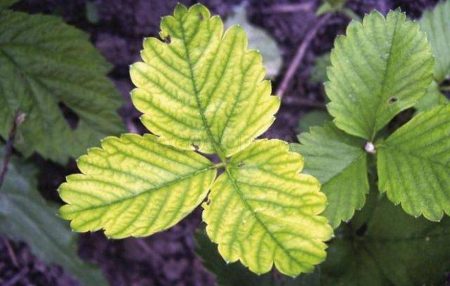
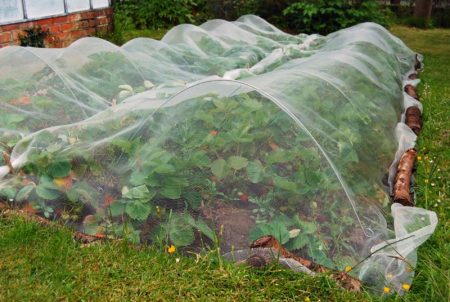
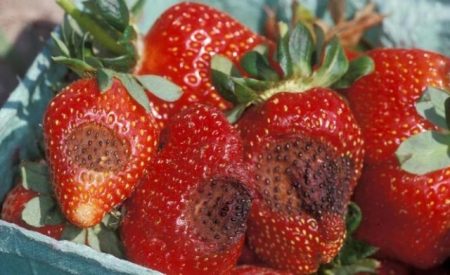
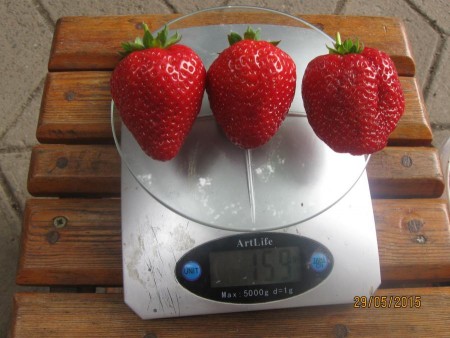

 (5 ratings, average: 4,00 out of 5)
(5 ratings, average: 4,00 out of 5) CUCUMBERS NEVER GET SICK, I'VE BEEN USING ONLY THIS FOR 40 YEARS! I SHARE A SECRET WITH YOU, CUCUMBERS ARE LIKE THE PICTURE!
CUCUMBERS NEVER GET SICK, I'VE BEEN USING ONLY THIS FOR 40 YEARS! I SHARE A SECRET WITH YOU, CUCUMBERS ARE LIKE THE PICTURE! You can dig a bucket of potatoes from each bush. Do you think these are fairy tales? Watch the video
You can dig a bucket of potatoes from each bush. Do you think these are fairy tales? Watch the video
 How our fellow gardeners work in Korea. There is a lot to learn and just fun to watch.
How our fellow gardeners work in Korea. There is a lot to learn and just fun to watch. Eye trainer. The author claims that with daily viewing, vision is restored. They don't charge money for views.
Eye trainer. The author claims that with daily viewing, vision is restored. They don't charge money for views. A 3-ingredient cake recipe in 30 minutes is better than Napoleon. Simple and very tasty.
A 3-ingredient cake recipe in 30 minutes is better than Napoleon. Simple and very tasty. Therapeutic exercises for cervical osteochondrosis. A complete set of exercises.
Therapeutic exercises for cervical osteochondrosis. A complete set of exercises. Which indoor plants match your zodiac sign?
Which indoor plants match your zodiac sign? What about them? Excursion to German dachas.
What about them? Excursion to German dachas.
He who doesn’t love anyone himself, it seems to me, no one loves him either.
The idea is correct, but what does it have to do with Asian strawberries?
Tasty, good, large berry. We have been growing it for a long time, no complaints.
Please give me your advice, I really need to buy a good quality walk-behind tractor. Thanks everyone for your help